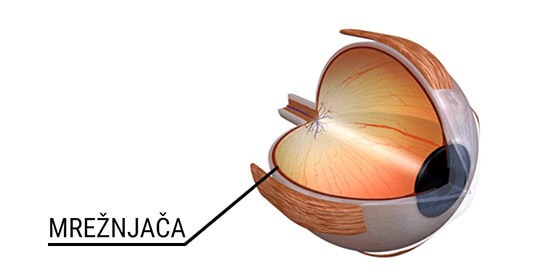
The retina is situated on the posterior part of the eye and functionally it is one of its most important parts. The retina receives light photons and transforms them into neural electrical impulses, which are further transmitted to the brain. It is composed by several different layers and each of them has a very determinate role. It is interweaved by a multitude of vessels, which supplies blood and oxygen to this vital part of the eye. Chemical and electrical processes take place in the retina and they transmit impulses through the optic nerve to the brain, forming the picture that we see.
The function of retina
The photoreceptors in the retina are made by small rods and cones, and their composition is similar. The function of the rods is to allow a better vision in the dark. The biggest concentration of the rods is in the peripheral retina and their density decreases towards the macula. As the rods do not detect colours, it is difficult to determine the colour of the object that we see at night or in low light. The function of the cones is to allow the daytime vision. They process strong light and are responsible for vision and color recognition. The biggest concentration of cones is located in the macula.